Nobel Prize century of dance

He began to experiment with nitroglycerin Nobel. In 1864 work exploded and in that accident his brother died. But he continued with the research and, three years later, invented the dynamite.
According to novels, the dynamite's ability to reduce the environment would end with wars, but it did not happen. Perhaps with the aim of compensating for the effect of dynamite, he wrote his last will a year before his death, in 1895. His inventions gave him good benefits and made a great fortune. After the funeral was finished and the body of the Novels was burned, the family gathered to read the will. All were surprised and completely angry, leaving the money to create a foundation with prizes.
The family wanted to interpose resources, but the desire of Nobel was fulfilled and in 1901 the first Nobel prizes were awarded: that of physics to the German Wilhelm Conrad Röntgen, that of chemistry to the Dutch Jacobus Henricus van't Hoff, that of medicine to the German Emil Adolf von Behring, that of literature to the French Jean Suming.
Most Nobel laureates are awarded in Stockholm because three Swedish organisations are responsible for selecting and awarding. The prizes of physics and chemistry are managed by the Royal Swedish Academy of Sciences, the medicine by the Caroline Institute and the literature by the Swedish Academy. The exception is the Nobel Peace Prize, commissioned by the Norwegian Nobel Committee and delivered in Oslo. Both ceremonies are celebrated on December 10, the anniversary of the death of Alfred Nobel.
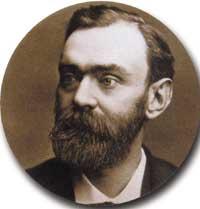
In 1968, the Bank of Sweden decided to establish an economic prize. The following year the first was delivered to the Norwegian Ragnar Frisch and the Dutch Jan Tinberg.
The winners receive a gold medal, a diploma and money. The amount of money is changing year after year, the prize of 1901 was 150,000 crowns and this year approximately 10 million crowns.
Scientists who made the fifth state of the matter possible will receive a prize in December
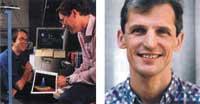
In 1924, the Indian physicist Satyendra Nath Bose made a series of calculations on light particles. The results of these calculations were sent to Albert Einstein and between them they developed the theory of a new state of matter. The process is similar to the passage of gas to the liquid, so a condensation was considered. This new situation is called condensed Bose-Einstein.
According to this theory, the cooling of the bosons below a temperature allows many of them to accumulate in the fundamental quantum state, that is, at a minimum energy level. The particles that meet this requirement were called bosons in honor of the physical Bose. The bosons are mesons and photons. For example, alpha particles (nucleus of the helium-4 isotope) are bosons.
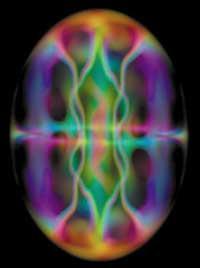
The quantum feature of the bosons is to have a full spin. Therefore, these particles are not distributed to energy levels such as electrons. Physical Bose discovered it and calculated the distribution when the absolute temperature is zero. The theoretical conclusion was the condensate of Bose Einstein. The obstacle to the application of this same idea to fermions is the principle of exclusion of Pauli, so it is not possible to obtain condensates similar to this type of particles.
At the time of Bose and Einstein there was no practical way to get this condensate. However, in 1995, using laser cooling techniques, it was possible to perform in a laboratory. Eric A. Cornell and Carl E. The experiment was conducted by Wieman, placing the rubidium atoms at a temperature of 20 nanocelvin. Wolfgang Ketterle, for his part, carried out the same experiment using sodium atoms, in short, with another alkaline metal.
The condensate Bose-Einstein has already sought several applications, among which is to make chips with quantum computers.
At the beginning of December, for this research, three scientists will receive the Nobel Prize in Physics this year.
Two Americans and a Japanese receive the award for their research on surgical catalysis

Products that accelerate chemical reactions are known and used for a long time. These products participate in the reaction, but without changes, that is, they have the same chemical structure as at the end of the process.
The "help" of these products to accelerate reactions is called catalysis and the catalyst product itself. For example, the addition of platinum or palladium in many of the reactions involved in the hydrogen molecule significantly accelerates the reaction. There are many examples in everyday life, such as lead that was added to better burn gasoline.
This year's Nobel Prize winning chemicals have prepared catalysts for use in asymmetric reactions. This means that, in addition to provoking a quick and effective reaction, these products function only with molecules in a certain way. Proteins are chiral catalysts; nature has evolved over millions of years, so they catalyze very specific chiral reactions. The man also wanted to follow this path.
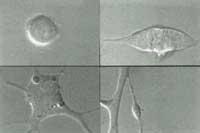
For example, Knowles invented an effective method for the industrial synthesis of the L-DOPA molecule. This served to make drugs to treat Parkinson's disease, but only when it was synthesized in a given way, since quirality is related to molecular asymmetry. The synthesis of L-DOPA required asymmetric hydrogenation. The Knowless catalyst removes all non-suitable products and accelerates the formation of the suitable one.
The other two award-winning chemists took as their starting point the work of Knowles and applied it to other broader fields of chemistry. Japanese Noyori obtained the same type of reaction (hydrogenation) with other substances, while Sharpless extended these methods to oxidation reactions.
This year they wanted to reward the work that will help complete cancer

All pluricellular living beings come from a single cell, which reproduces by division. It has been more than a hundred years since it was known, but there are still many steps to be resolved in this process.
Division is a very complex phenomenon. The first thing to do is to double the total machinery of the cell, the organelles, so that the two cells that form after division receive it. But the most difficult process is to duplicate genetic information. The cell must thoroughly review the dubbing, since putting the smallest error in the DNA sequence can cause further damage.
But until recently the key to this process has not been known: the control of the process. How does it decide that the time has come to divide the cells? Who and how do you decide? That's what the American Hartwell and the British Nurse and Hunt have investigated for many years. The universal molecular mechanism of the division has been identified, which has endured by species throughout evolution and is the one that has been sought to award.
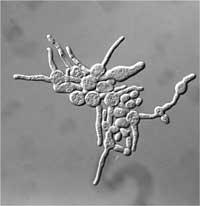
Hartwell invented the term ‘Moment of Verification’ to designate the time when the cell ensures that there are no errors in the new DNA and that it can continue with division. In principle, if there are errors in the duplication of DNA, there are proteins that correct them, but it must be verified that it is well in the future, with the help of cyclimate-dependent kinases, among others. In fact, when errors occur in cell division control, a continuous division of cells can occur, which is the cause of tumors. In addition, despite changes in genetic information, they will be divided, so mutations will be accumulated in the cancer cells.
Félix M. of the Department of Biochemistry and Molecular Biology of the University of the Basque Country. According to Professor Goñi, “in the field of cancer there have been two major lines of research: oncogenes and those that have investigated the control of the cell cycle, especially cyclines and cyclin-dependent kines. Cancer was until recently a mystery disease, but thanks to the award-winning research work, it is now a known mechanism disease.” According to experts, this will allow in the future the genetic identification of each tumor and its specific treatment.





